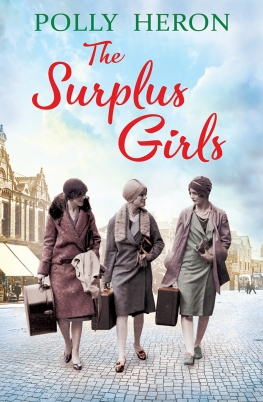For anyone who missed my blog interview with Tara Greaves on her After The Rain Comes Sunshine website, here it is:
* h Can you tell us about Polly Heron and why you chose a pen name? As Polly, I will be writing the same sort of book I write as Susanna Bavin – family sagas in which the reader joins the heroine as she faces up to challenges provided by the social, legal and financial constraints of the day. As Susanna, I have written four stand-alone novels, but as Polly I will be writing a series set in the early 1920s for Corvus, which is the commercial fiction imprint of Atlantic Books. When a saga writer writes for a new publisher, it is normal practice to use a different name – unless you are terrifically famous, of course!
Why did you decide to share the news and not keep it a secret? Corvus felt it was only right for my Susanna Bavin readers to have the chance to carry on reading my books. Saga readers aren’t at all fazed by an author’s having more than one name. For example, Mary Wood also writes as Maggie Mason and Margaret Graham is Milly Adams.
Tell us about the series you are writing for Corvus. Both the series and the first book are called The Surplus Girls. The real surplus girls were that generation of young women whose possible husbands lost their lives in the Great War. These girls grew up expecting to get married, but now they faced life on their own, which included the need to support themselves. In The Surplus Girls, my heroine Belinda attends a newly-formed business school so she can learn office skills and find work with better conditions and higher pay than her factory job. The business school, and the two ladies who run it, provide one of the links between the books. hh
hh Do the books have to be read in order? Yes and no! Each book has its own heroine and the book is primarily her story. But there is also on on-going story unfolding regarding Prudence and Patience Hesketh, who run the school, and this continues from book to book, though I have divided their story into sections. Each section is complete in itself and appears in a different book. So, as with any series, while it is better to read the books in order, I have taken great care to write them in such a way that a reader could pick up, say, book 2 without having read book 1 and it would make perfect sense.
How do you organise your work? The Surplus Girls was written while I still had a day job. It took five months of writing in the evenings and at weekends. Mind you, I did get off to a flying start with NaNoWriMo (National Novel Writing Month). I do NaNo every year and on that occasion, The Surplus Girls was my project. I wrote just over 50,000 words in a month – the first time I had achieved that.
Since then I have become a full-time writer and I have developed a routine that works well for me. I set myself a word count target for the month, which I divide up into working weeks. The monthly target might vary. For example, last month it was 35,000 words and I wrote 38,000. This month my target is lower – 25,000 words – because I know I have to make time for copy edits.
Can you share something that you have learned as a published author? Yes – it’s amazingly difficult to write a successful blurb! If other authors are anything like me, they get asked to produce a possible blurb, which they do and they think it is perfectly all right… whereupon their editor works wonders and transforms it into something lively and appealing, with a sense of immediacy. It’s a skill I’d love to have.
* * * *
Polly's website
Polly's author page on Amazon
|
Chatting About The Surplus Girls
Posted on 6th October, 2019



Make A Comment
Comments (1)
I enjoyed learning more about 'The Surplus Girls' and yes, blurb writing...also a skill I'd love to have! Writing a circa 90,000 word book is in some ways easier than writing a blurb for it!